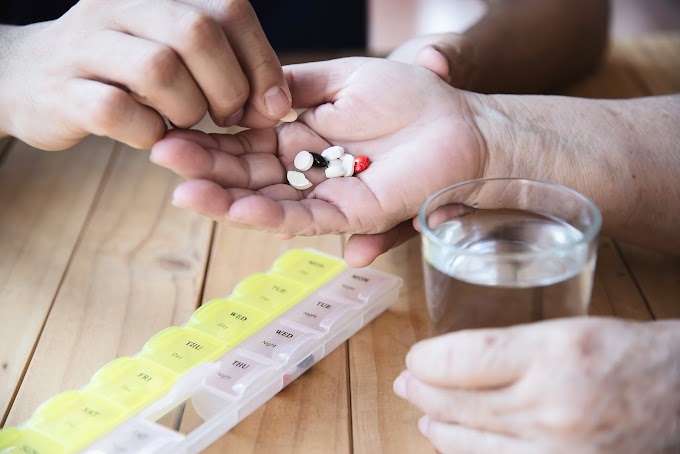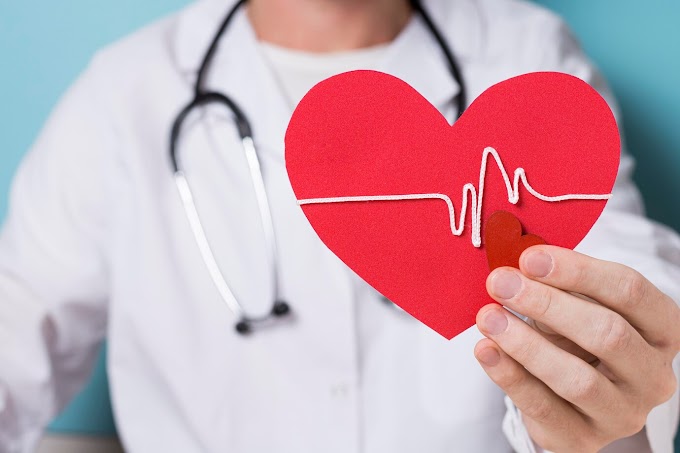Do you know what the 10 most common women's health problems are and would you be able to recognise the symptoms? In this Post, we're going to run through 10 common gynaecological conditions with consultant gynaecologist Miss Zoe Woodward. There's chapters in the description
below this Post so that you can click to the section which is most relevant to you. So, let's get started. Hi I'm Laura Neale. Head of partnerships and community fundraising at the women's health

10 Common Health Conditions Topica List :
- Meet the Gynaecologist
- Endometriosis
- Adenomyosis
- Vaginismus
- Dysmenorrhea
- Uterine Fibroids
- Polycystic Ovarian Syndrome (PCOS)
- Pelvic Organ Prolapse
- Vulvodynia
- Interstitial cystitis (IC)
- Ovarian Cysts
- Advice from a Gynaecologist
Why Women’s Health Matters :
.png)
Meet the Gynaecologist:

Hi, I'm Zoe Woodward and I'm a consultant gynaecologist at the Chaucer Hospital in Canterbury. Today I'm going to talk you through 10 of the most common Gynaecological conditions in the UK including information about their symptoms, causes and their treatment options. Remember you can find video chapters in the description below so you can skip to the part of this video that is important to you. If we've missed a condition that impacts you and you want to hear more about it from a consultant like me, let us know in the comments
section. People often ask me, what gynaecology means or what gynaecologists like me do? Gynaecologists are medical doctors who specialise in the female reproductive system. Gynaecology simply means, the medical practice of the female reproductive system. So, let's get into the conditions.
Endometriosis:

Endometriosis is a common condition whereby tissue that is similar to the lining of the womb is found outside of the womb, the most common place it's found is around the ovaries, behind the ovaries and around the tubes. So let's draw a simple diagram of the female reproductive system. I have to warn you, I'm not a great artist! So this is the uterus and the lining of the womb, the cervix is here and the vagina is here. The tubes are at the top of the uterus, one on each side and underneath is the ovary, again, one on each side. So, where would I find endometriosis commonly? It can often and more usually be found behind and around the ovaries. It can also be found around the tubes. What are the most common symptoms? Often people will have, heavy painful periods, bleeding can be irregular, can have pain with intercourse, pain on opening bowels and some people will also have subfertility or an inability to get pregnant. So endometriosis can have many symptoms, it's really important that when you have your appointment with your gynaecologist that you explain all of your symptoms to him or her. So how can we test for endometriosis?
Really important that your gynaecologist takes a full history from you. You'll probably have a pelvic examination and some form of scan. Generally, this would be an ultrasound scan and sometimes also an MRI scan. So what causes endometriosis? We don't fully understand all the causes, it certainly can be genetic, so for example, if your mum, aunty, sister has endometriosis and you have symptoms, there's also an increased chance that you'll have a diagnosis of endometriosis. There's a great deal of research going on, so as a gynaecologist I'm extremely optimistic that in the future we will fully understand this disease. We do know that it's hormone-dependent and that leads on to many of the different treatment options. So, what are the most common treatment options for endometriosis? Initially, it's really important that your symptoms are controlled so that we can discuss with you, different forms of pain relief for pelvic pain, different options for managing heavy periods and also a number of hormone treatments. Hormones can be given by tablet, as a coil, by injection or as an implant. Some people will require surgical treatment, that can be quite minor in the form of a day case procedure or quite major and sometimes requires a hysterectomy.
Adenomyosis:

The next condition we're going to talk about is adenomyosis, so what is adenomyosis? It's a condition where the tissue that is similar to the lining of the womb tissue is found in the muscle of the uterus, in the muscle of the womb. So what is the difference between endometriosis and adenomyosis? it's really just where that tissue is found, so you may recall that endometriosis is commonly found behind the ovaries around the tubes, whereas adenomyosis is within the muscle of the uterus. So, coming back to my drawing, adenomyosis is found in the muscle of the uterus, so any part of this section of my drawing. The most common symptoms of Adenomyosis are heavy painful periods. They can be quite debilitating such that functioning during the first few days of each cycle is very difficult. So, to diagnose adenomyosis it's very important that you discuss all your symptoms with your gynaecologist. You'll likely undergo a pelvic examination and some form of imaging in the form of an ultrasound and possibly an MRI scan. MRI is increasingly being used as a form of diagnosing adenomyosis. People will often ask me what causes adenomyosis and similar with endometriosis, we don't fully understand all the causes.
We know it's more common in people who've had kids, or in their middle age. So, although we don't fully understand all the causes of adenomyosis there are some very successful treatment options available. The treatment is aimed at your symptoms. So for example, if your main symptom is pelvic pain or heavy periods, we can discuss different options for you. They may be simple pain relief or hormone treatments, such as the pill the coil, the implant and the depo. Some people will need surgical treatment and this is usually in the form of a hysterectomy. Your gynaecologist will discuss this all in full with you and all the pros and cons of any treatment that you decide is right for you. As a gynaecologist it's really helpful when my patients bring with them a list of their symptoms and also what impact it's having on their quality of life and their ability to function. So I would urge you to make a note of all your symptoms and the impact they're having on your quality of life and ability to function and also a note of what treatment options you've already tried in the past so that we don't repeat them. Don't be afraid to ask for different scans and also to discuss with your gynaecologist the different treatment options that are available.
Vaginismus:
Dysmenorrhea:

Uterine Fibroids:

So we're next going to talk about fibroids. Fibroids are extremely common, probably 50-70% of women will have a fibroid at some point during their reproductive life. They are smooth muscle tumours and almost always benign. So coming back to my drawing, I'm just going to draw the different types of fibroids and where they are. We can have a fibroid in the lining of the womb. This is called "submucosal" and generally, these fibroids will cause heavy periods. We can have a fibroid in the muscle of the uterus, "intramural". We can have a fibroid on the surface of the uterus, called "subserosal" and finally we can have a fibroid on a stalk and that's called "pedunculated". So, what are the causes of fibroids? It's multi-factorial so probably part environmental, part genetic and we do know that they're much more common in black women. We know that fibroids are hormone-dependent so after the menopause, they will shrink. Often fibroids are asymptomatic which means they do not cause symptoms. How do we test for them? Usually with an ultrasound
scan and possibly with an MRI scan. So, you'll go for a scan, maybe during early pregnancy or for some other reason and you'll be found to have a fibroid. Other symptoms, may be heavy, painful periods. If the fibroids are very large they may cause a swelling or distention of your tummy. Dependent on where they are they may press on the bladder, they may press on the bowel and that can cause symptoms. They sometimes can be linked to pregnancy complications, but this is rare. They generally do not cause pelvic pain, so if you have pelvic pain it may be worth talking to your specialist about other causes for this. The most common treatments are tailored towards the symptoms. So, many women with fibroid they are unaware they have do not require any treatment. If you do have symptoms then you may be offered treatment options such as pain relief, ways of treating heavy periods and also hormonal treatments. Surgery is often used and this can either be endoscopic through the vagina. Endoscopic through the tummy or through a cut in the tummy in the form of removal of the fibroid, which is called "myomectomy" or
Polycystic Ovarian Syndrome (PCOS):
.jpg)
a hysterectomy. So next we're going to come on to polycystic ovarian syndrome or "PCOS" for short. PCOS is common it probably affects about 1 in 4 women and it's hormone-dependent. So we're just going to come back to our drawing again. So the ovary, I'm just going to move it up there and make it much larger. So polycystic ovary simply means there are a multiple number of cysts, they're usually quite small and they're generally around the edge of the ovary. So, what are the causes of PCOS? We don't fully understand all the causes but it is genetic in part so it will run in some families. It's a condition which can cause a disruption in the hormone levels and as a result, people will often have, infrequent or absent periods, significant weight gain which is very difficult to shift, hirsutism which simply means hair
often on the face, the chest, the tummy and acne. People can also have subfertility or an inability to get pregnant. So, how do we test for polycystic ovarian syndrome? Really important That when you come to see the specialist or your GP that you bring a full list of your symptoms, we can undertake an ultrasound scan, particularly looking at the ovaries and we can do a blood test, looking at your hormone levels. So treatment for polycystic ovarian syndrome is usually and often a lifestyle change. If you are overweight, it's really critical to do as much as you can to lose weight, you can be referred to a specialist team of dieticians, undertake an exercise regime. Sometimes hormonal treatment is needed. If hair growth is an issue then a topical cream called vaniqa can be used, or even self-referral for electrolysis.
Pelvic Organ Prolapse:

Next, we're going to talk about pelvic organ prolapse, it's when the structures, ligaments, muscles supporting the pelvic organ weaken, such that that organ drops down in the pelvis often causing a bulge within the vagina. You can have a rectal prolapse, bladder prolapse, womb or uterine prolapse, bowel prolapse. So, what are the symptoms? The most common symptom is a lump in the vagina. It's not usually painful, it can be a little bit uncomfortable. It may cause some difficulties with bowel or bladder function can sometimes cause lower back discomfort or pain. It generally won't cause distention or bloating of your tummy. Testing for pelvic floor prolapse is purely with a pelvic floor examination, so when you come to see your specialist, have a discussion about your symptoms you will also have an examination undertaken. Common treatment options for prolapse. Most important thing to say is you don't have to do treatment, so if the symptoms are minimal, not impacting on your quality of life, then your gynaecologist may simply discuss with you some lifestyle changes, for example, weight
management, avoiding constipation, undertaking regular exercise, all of these are extremely important. If you have a job where you lift heavy objects repeatedly or you have a chronic cough or you suffer with constipation, then sometimes treating these symptoms can improve your prolapse. Your gynaecologist will discuss this with you. Other treatments may well be specialist pelvic floor exercises with a women's health physiotherapist. Depending on your symptoms, your age, your other health concerns, you may be offered a ring pessary that sits in the vagina and supports the prolapse. Your gynaecologist may also well discuss with you the option of surgery. The surgical treatments are grouped together as a pelvic floor repair, more specifically this may be called an "anterior repair" for a prolapse of the bladder which is called a "cystocele", it may be a "posterior repair", which is a prolapse of the rectum or bowel which is called "rectocele" or "enterocele". Sometimes if the womb itself is prolapsing, you may be offered a hysterectomy.
Vulvodynia:

Next, we're gunna talk about vulvodynia. Vulvodynia is chronic pain or discomfort at the opening of the vagina. It often will present with a real burning sensation, irritation, itching, soreness, throbbing and quite significant pain during intercourse. Sometimes people can confuse the symptoms with a UTI or urinary tract infection, so you may well also have a bladder test undertaken or a urine dip. The testing can be tricky, so when you come to see a gynaecologist you'll have a discussion about your symptoms, the impact on your quality of life and also a pelvic examination. Sometimes we use a little q-tip or a cotton bud to identify exactly if you have a trigger area, which is causing you symptoms and pain. The causes are multiple and not fully understood for all women. They may be linked to stress, anxiety, past events.
They may be nerve involvement or neuropathic. Sometimes it may be a past vaginal infection that has caused the symptoms to start. Treatment options are quite wide often our women's health physiotherapists can be very helpful in treating the symptoms of vulvodynia. Some people are treated with biofeedback, again this is usually with the help of a physiotherapist. There are treatment options involving tablets, sometimes topical local anaesthetic can be extremely helpful. The reassuring thing about vulvodynia is that It is often self-limiting and by that I mean it will often disappear as bizarrely and as quickly as it started. It usually does however last 3-6 months. During that time it can also come and go.
Interstitial cystitis (IC)
%20(2).jpeg)
So we're next going to talk about interstitial cystitis, commonly also abbreviated to IC. It's a condition which causes, pelvic pain, pressure and pain in the bladder. The most common symptoms will be pain when passing urine, discomfort as the bladder is filling, it often also causes pelvic pain or pain with intercourse. It should not cause blood in your urine. So, how do we diagnose it? As with most conditions, it's really important, that you bring to your specialist gynaecologist a list of your symptoms, we won't see IC on an ultrasound scan, so you may be offered a cystoscopy which is a look inside the bladder with a little camera and at that time often a biopsy of the lining of the bladder is taken. So, how do we treat IC? Treatment is often multifactorial there may be a number of lifestyle
changes, including dietary changes. Avoiding the 4 C's which include carbonated drinks, citrus, caffeine and foods with high levels of vitamin c. Often you'll be referred to a women's health physiotherapist for pelvic floor exercises. Some women find an anti-histamine extremely helpful. There are other medications which are actually given into the bladder, they are called bladder installations. Other lifestyle changes would include, increasing your exercise, stopping smoking. We think stopping smoking is helpful because the carbon monoxide is probably an irritant and we know that IC is an irritated or inflamed bladder, so this can often help.
Ovarian Cysts:

So we're next going to talk about ovarian cysts. What are they? They're simply fluid-filled sacs. By far the most common are what we call "physiological", so part of your normal cycle. Every time you ovulate or release an egg, you have a cyst which is surrounding that egg. Generally, that is around 2cm - 2. 5cm in size, so for women that are still menstruating, every month, they will produce a functional, physiological cyst. Non-functional or non-physiological cysts can be due to endometriosis, that is more commonly called an "endometrioma", you can have a cyst called a "dermoid", "cyst adenoma" and sometimes ovarian cysts can be cancerous. So, what are the symptoms of an ovarian cyst? So somebody might present with abdominal pain, this is usually non-specific, it may be one-sided or the other and not necessarily linked to where you are in your cycle. If you have a cyst which is functional or physiological then generally that cyst is found later on in the cycle just before your next period comes. Other symptoms may be irregular bleeding, and if the cyst gets very large, it can cause bloating or abdominal distention, sometimes a cyst can rupture or burst, this will cause acute, severe, sudden pain and many women would go to A&E with this level of discomfort. Sometimes the cyst can twist, this is called torsion and again, this causes severe pain, often coming and going initially, usually requiring admission or at least being seen in A&E. Ultrasound is very accurate at diagnosing not only the type of cyst, but also where
it is and the size. Some women will also have an MRI scan for further information. Treatment options for ovarian cysts. The physiological and hormonal ones will often disappear by themselves so most of those we will simply watch and wait. You'll often be offered a re-scan 6-8 weeks later to just ensure the cyst has resolved or gone away. If the cyst remains is causing increasing symptoms or is a non-physiological cyst then we may discuss with you the option of surgery. Type of surgery will depend not only on the type of cyst, the size of the cyst, but also on your future fertility wishes. So we'll probably discuss with you, removing the cysts, but keeping the ovary, that's called "cystectomy", or indeed removing the ovary with the cyst and that is called "oophorectomy". A common concern with an ovarian cyst is, could it be cancer? Well yes, for a small percentage of people it can, ovarian cancer is more common as we get older and the ultrasound will give us some information as to the nature of the ovarian cyst. You may also be referred for a blood test, called a "tumor marker CA125" and this will also give information as to the nature of the cyst. So people, understandably, are often very worried that their ovarian cyst could be cancerous. It's more common as we get older but the risk is very small, less than 5 in 100 less than 5%
Advice from a Gynaecologist:

So, that was a really broad overview of the 10 most common gynaecological conditions which we see in the UK at the moment and I hope you found it helpful. Gynae conditions are really common, you're not alone. Speak to your GP, be referred directly to a gynaecologist, chances are your GP or the gynaecologist has seen somebody before with similar symptoms. Let us know how they're impacting on your quality of life. We'll discuss with you different tests, different treatment options and also what might be going on. So what I would say, please don't be worried, don't be afraid, don't be scared. As a gynaecologist I've seen many, many people with a wide range of symptoms by managing their symptoms, offering different treatment options, quality of life can often be improved.
So if there's any other women's health conditions that you'd like more information on from a consultant like me, then comment below this video, and we will make in-depth videos in the future, based on your requests. You can also read our Women's Health Matters report by clicking on the link in the description below. So throughout the video I've referenced a number of other healthcare professionals who can help manage your symptoms of these conditions. We at Circle Health Group have a wide network of dedicated healthcare professionals who can help you. Including physiotherapists, gynaecologists, dieticians and radiologists. To book an appointment with the right person, click on the link in the description bel
Why you should read the report:

So now we've gone through all of these gynaecological conditions, if you recognise any of the symptoms in yourself then please do go and visit your GP. There's a link to the full report in the description below, so please share it with your friends, with your family and your workplace, we really want to use this to raise awareness of these conditions and to normalise the conversation so that ultimately we can help to educate ourselves and others. There's a lack of awareness around a lot of these issues because there's still a real sense of stigma, taboo and embarrassment about talking about female bodies, but if we can
normalise these conversations and raise awareness of a lot of these issues then it will really help to empower women and girls to go and speak to their doctors, feel more confident talking to their friends and their families and ultimately seek treatments where they might need them. What women's health issues most matter to you? Please leave a comment below so we can make more of this content for you in the future.

.jpg)

.jpg)

.jpg)
.jpg)
.jpg)


.jpg)



